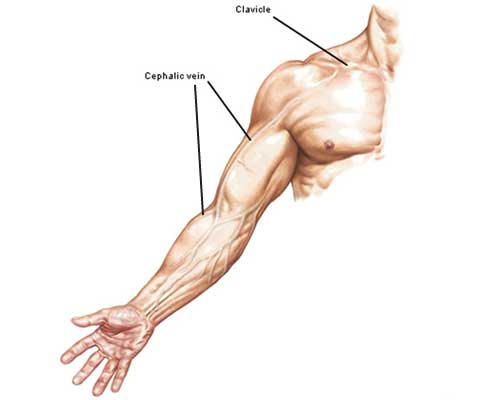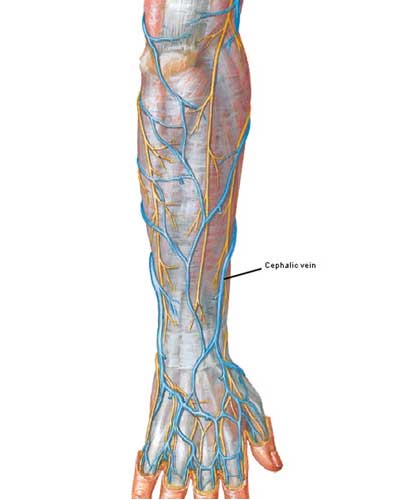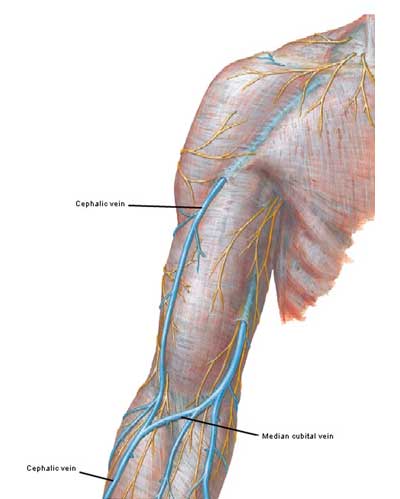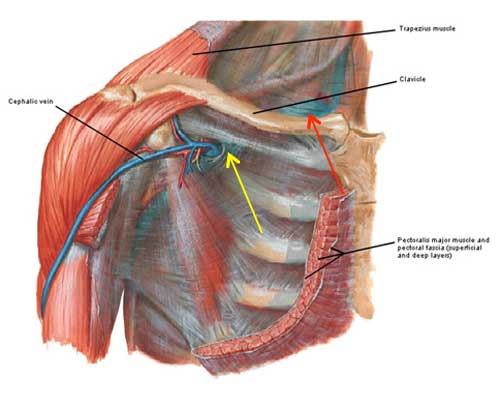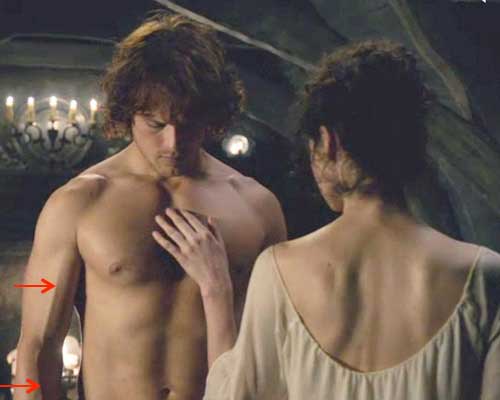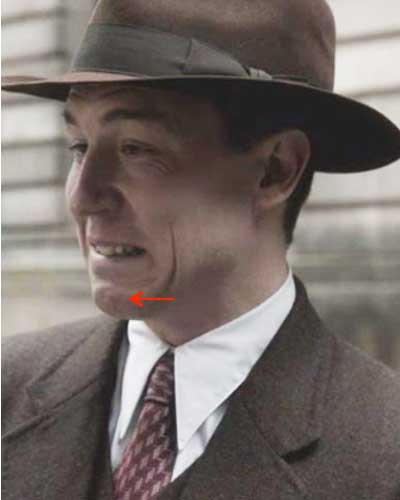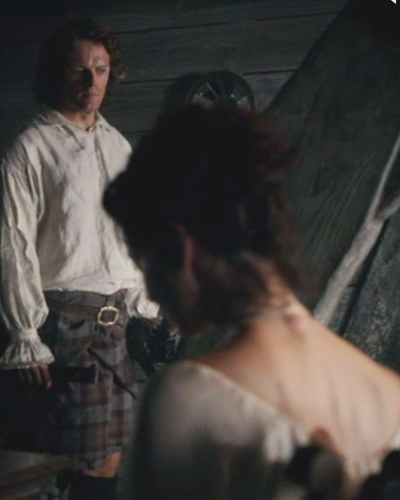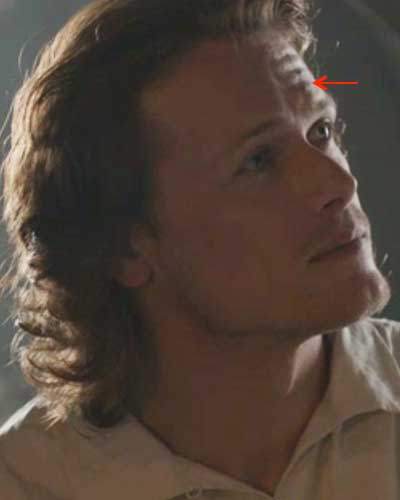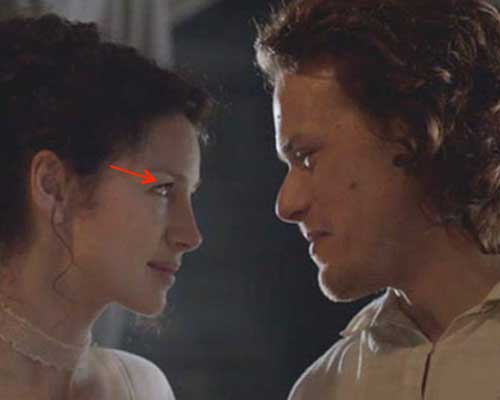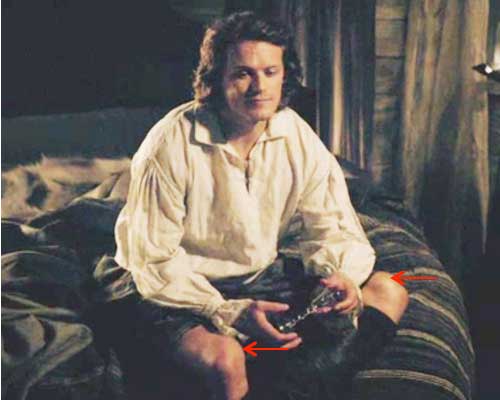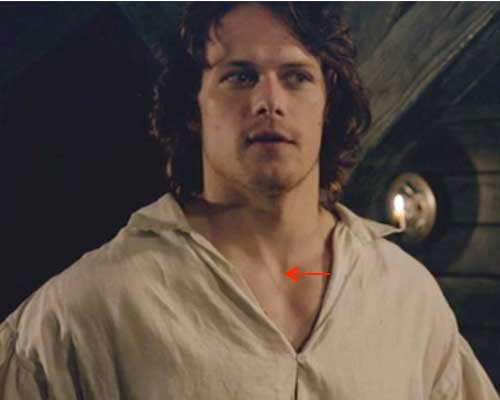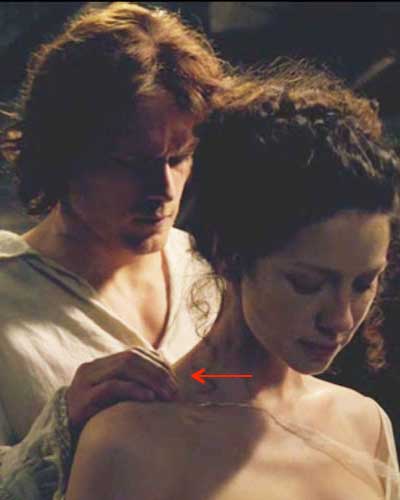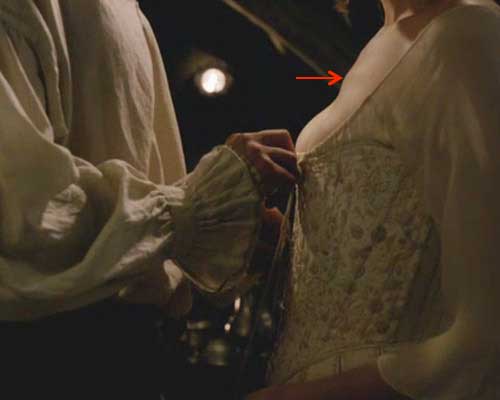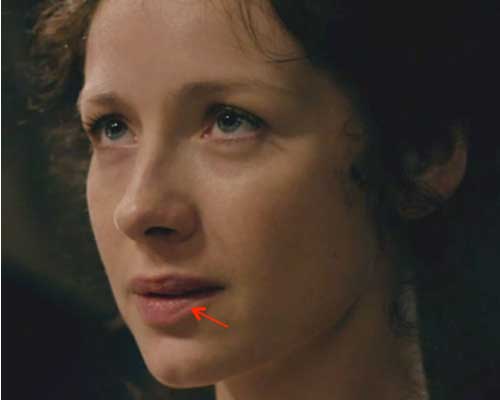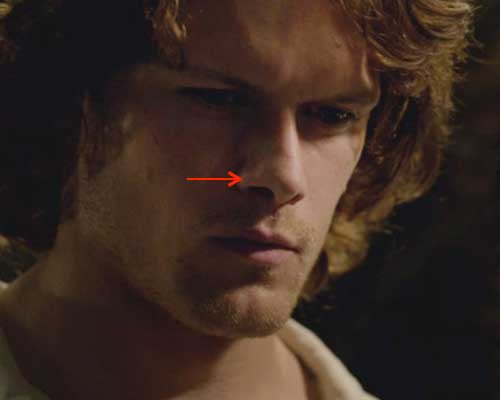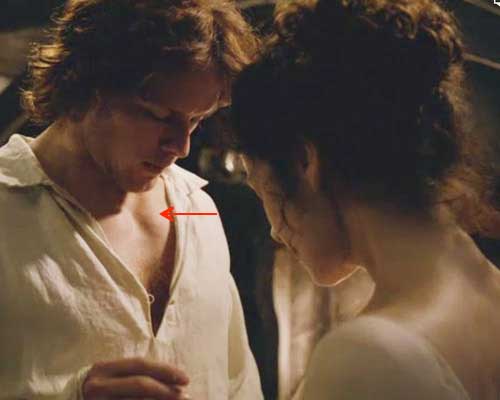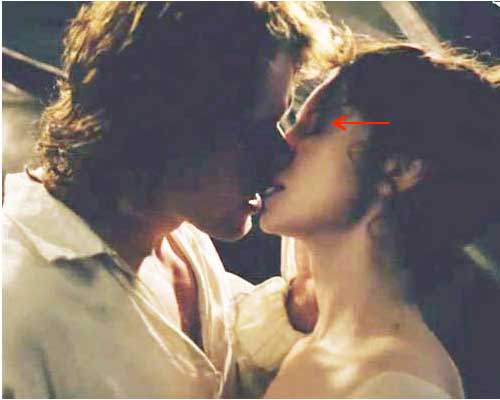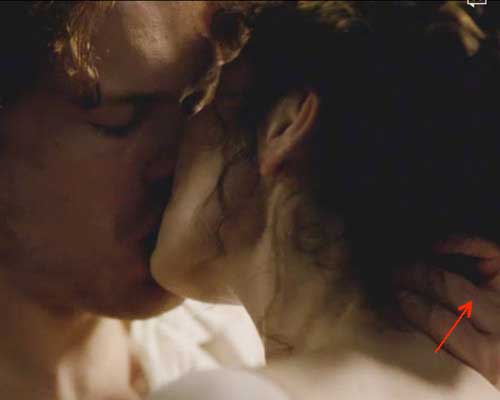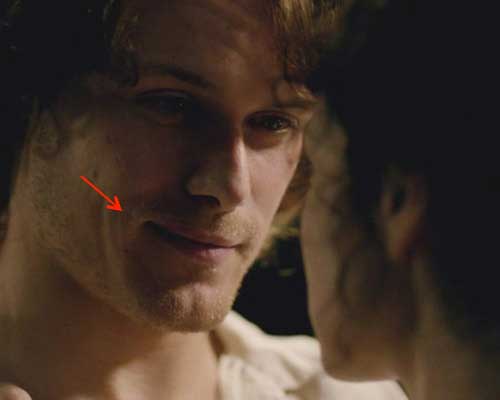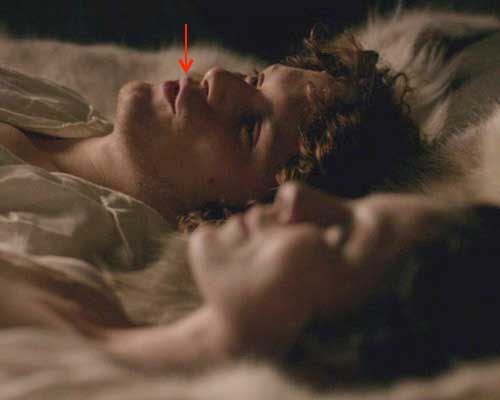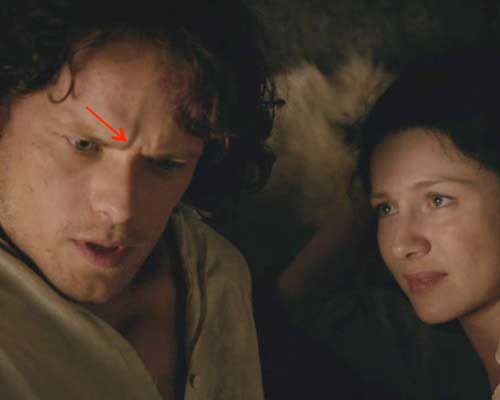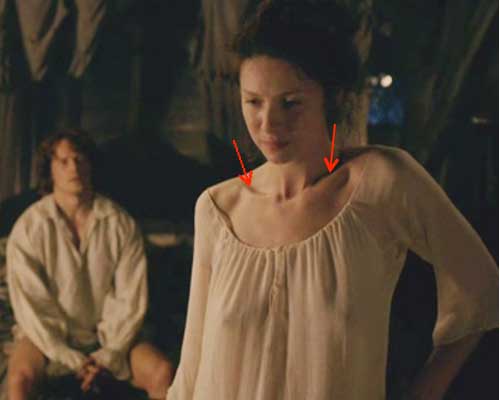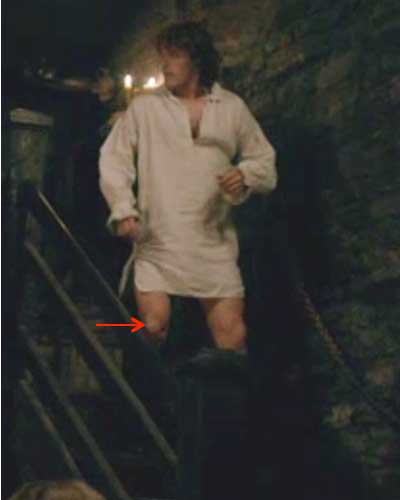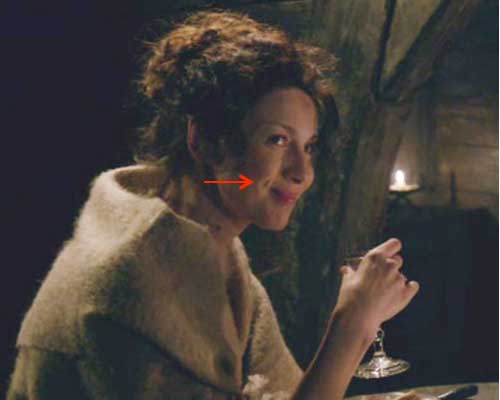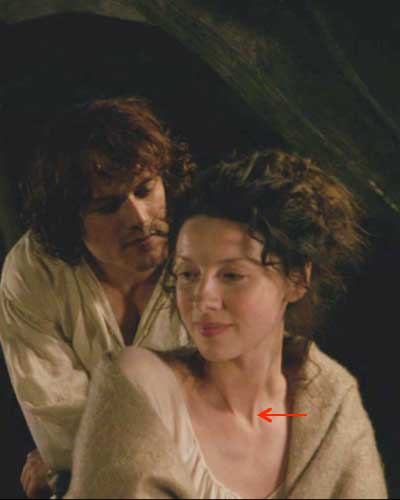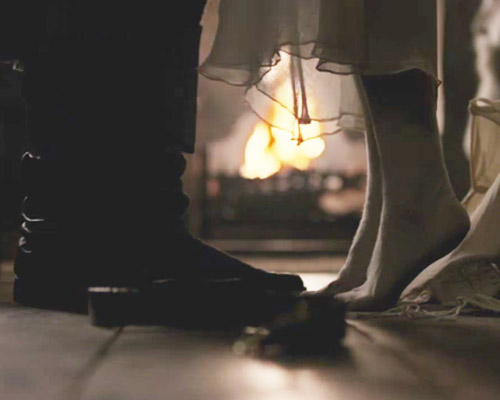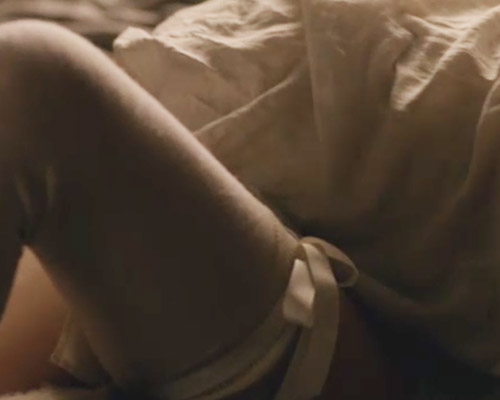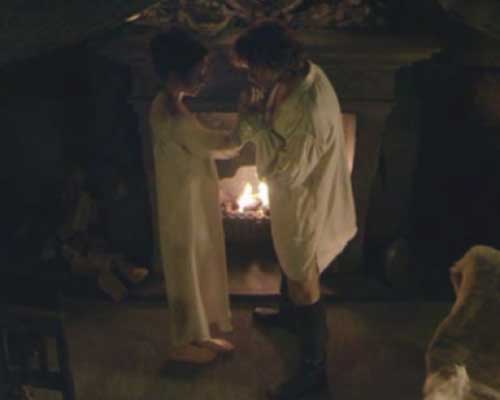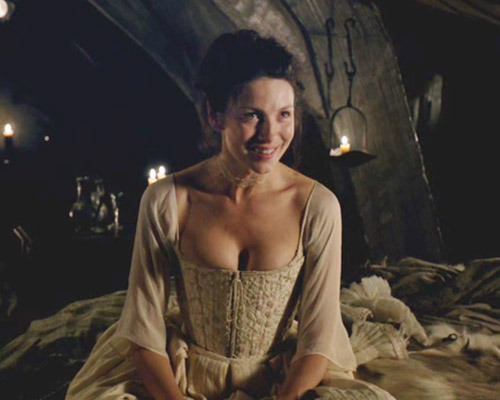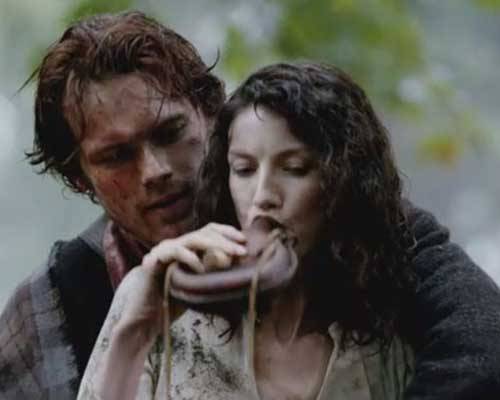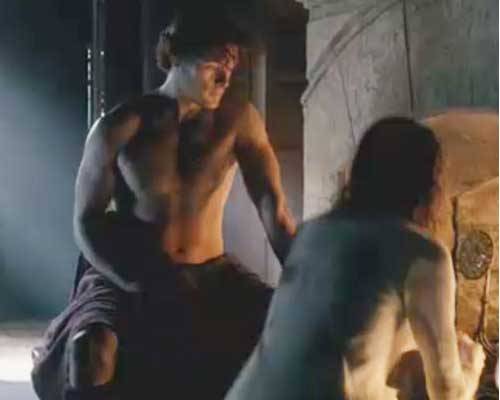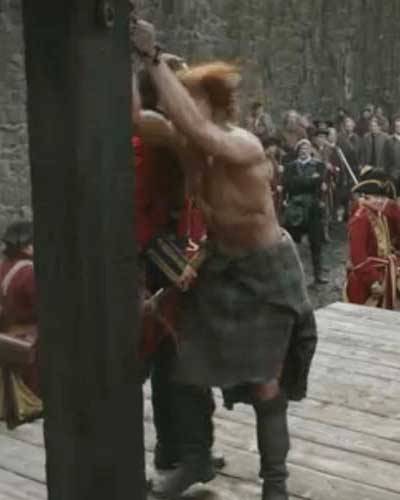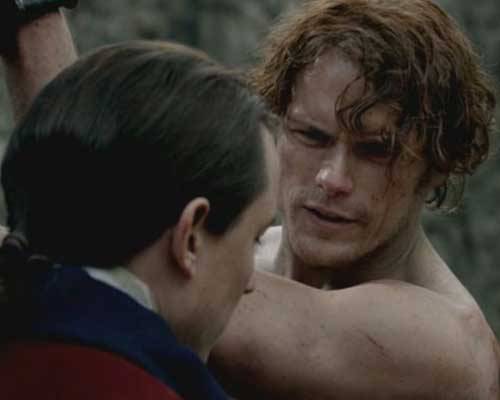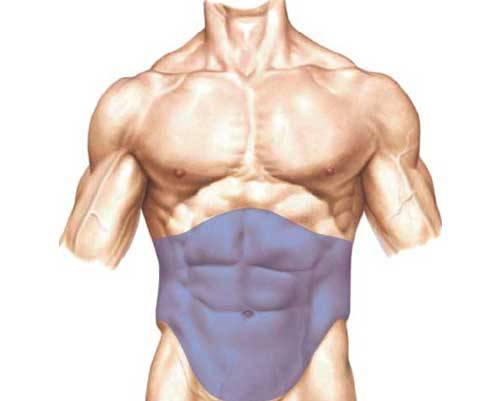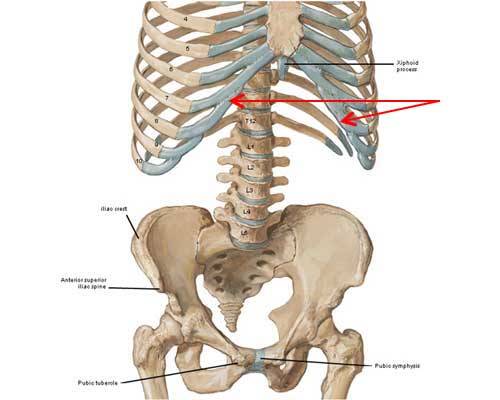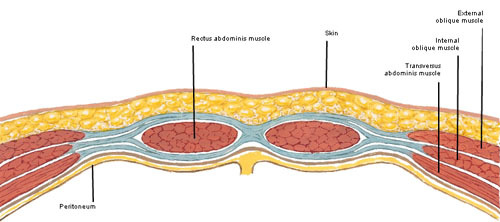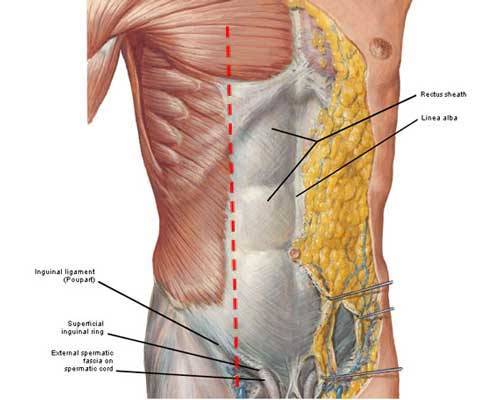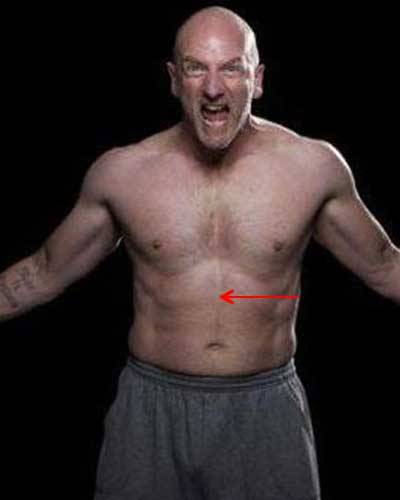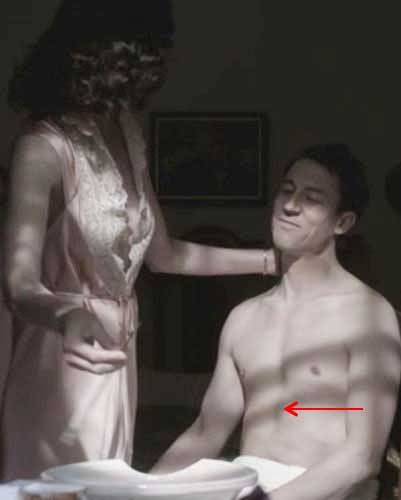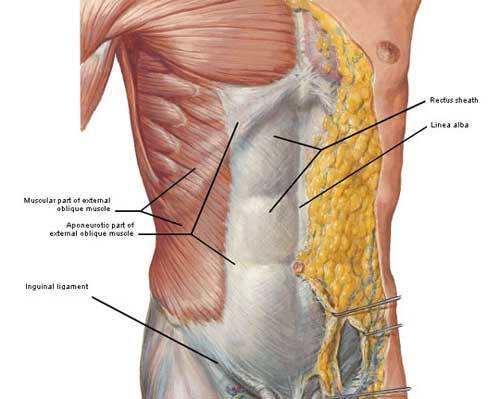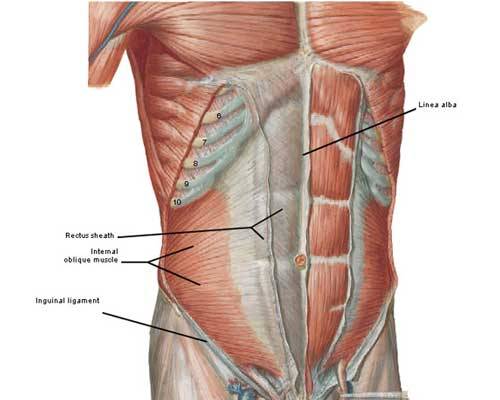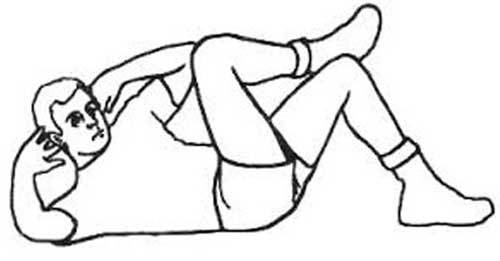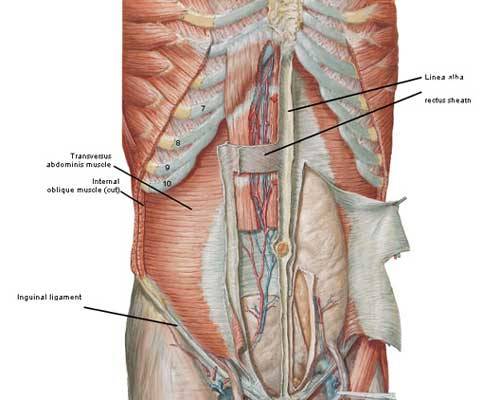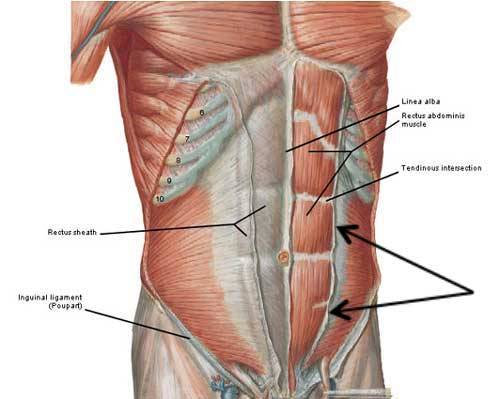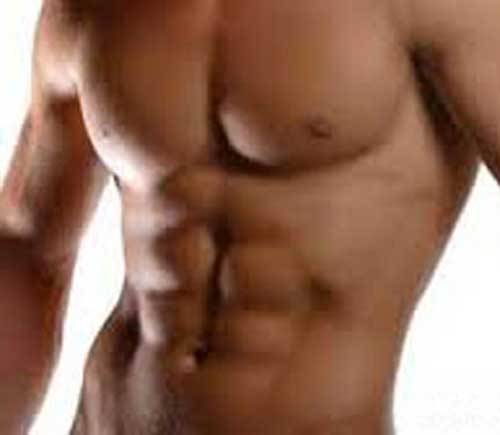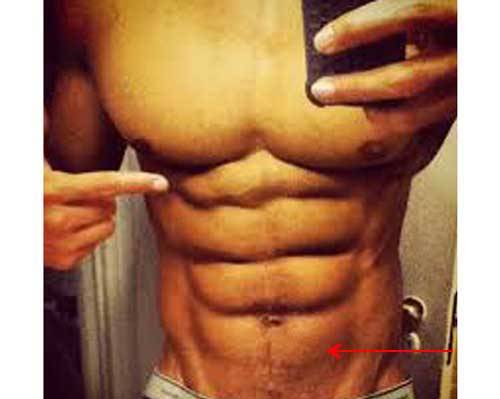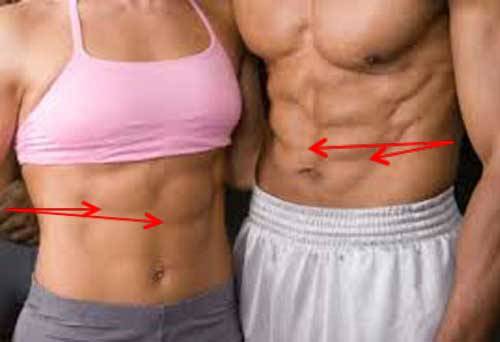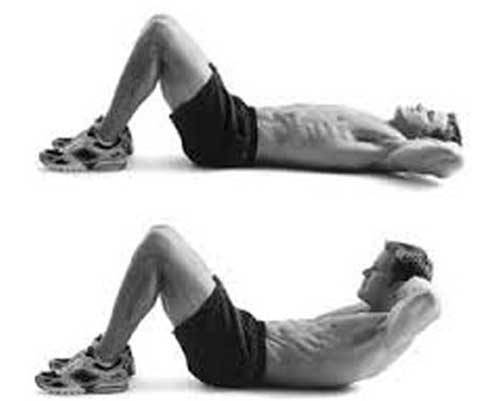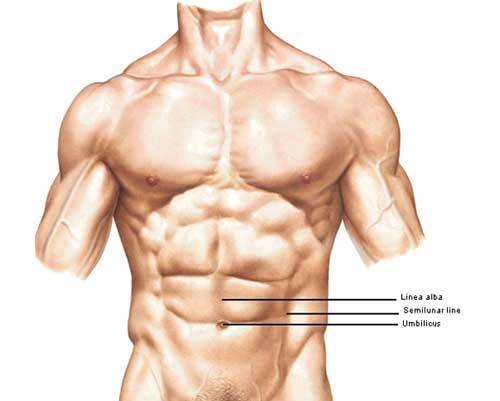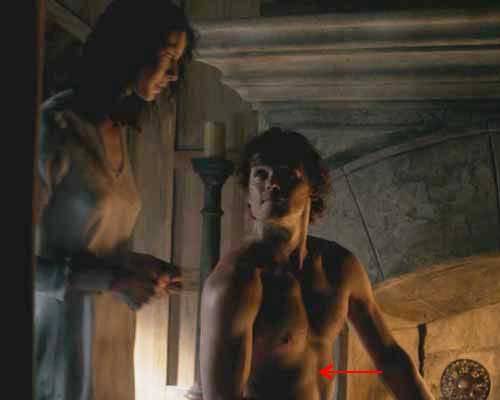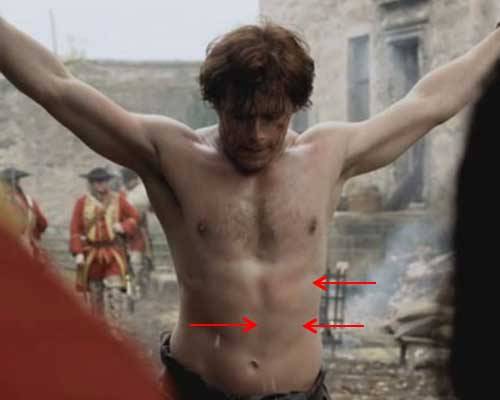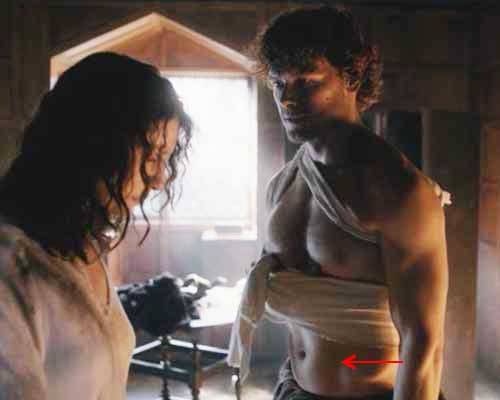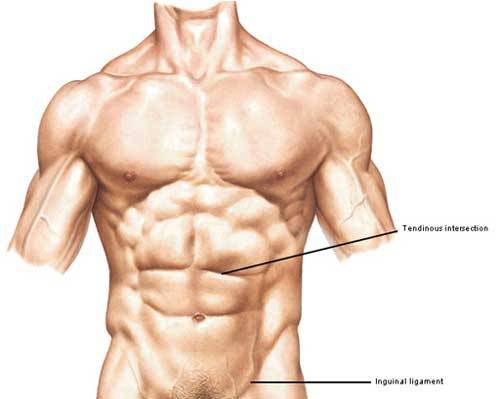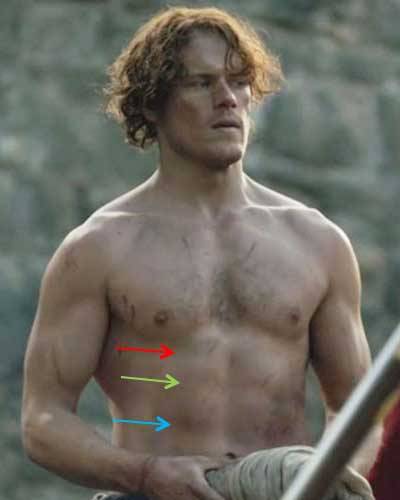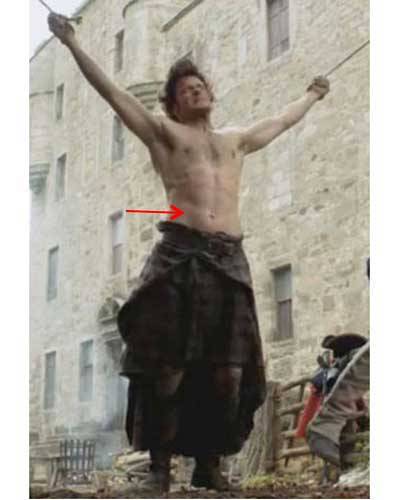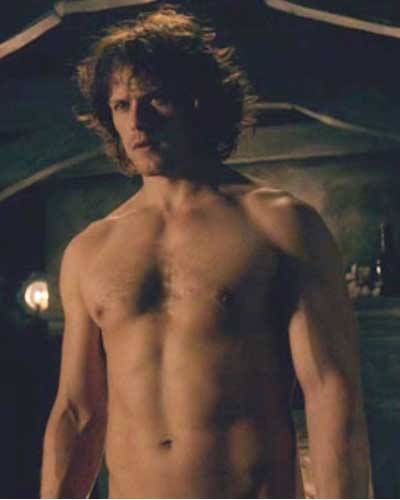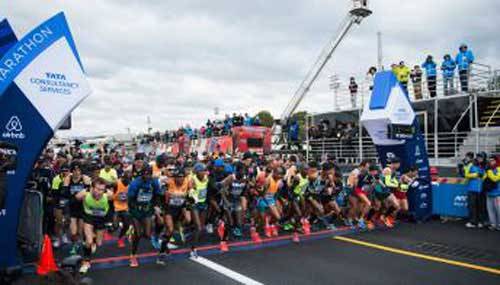Greetings, dear readers! Today, we will enjoy a short Anatomy Lesson #17: The Cephalic Vein. However, most of our time will be spent as anatomy guests at The Wedding! Raise your voices in song! I have been waiting to do this episode for nearly six months. As guests, we will perform a practice practical exam and a week from today (March 31st) we will take our midterm practical exam. Jamie will be our model for the today’s lesson but afterwards it’s Q&A time! Hey, now, stay with me. Dinna get cold feet!
Today’s test is for practice only; it is structured like a gross anatomy practical wherein structures are tagged with a string and a number. Students write the answer on their test sheet. But today, each question is followed by a link to the appropriate anatomy lesson, followed by an image, followed by the answer. Red arrows mark the structures. Also, this practical tags structures as they sequentially appear in “The Wedding” episode. There are 20 questions; a few are challenging but most are not.
Of course, I can’t resist a few choice Outlander quotes and some smart-arse commentary although truth be told, the tenderness and patience between Jamie and Claire as they reach out to one another in this episode are deeply moving.
So, pull out quill and paper. Record your answer and, if need be, write in the correct answer for future reference as there will likely be some repeat questions. Next week’s midterm will be for credit! Do your best and have fun!
Now, on to our brief anatomy lesson: the cephalic vein. Cephalic is an anatomical term with muddled origins but current usage means “directed toward, or situated on, near or in the head.” Photo A shows the cephalic vein in forearm and arm (Anatomy Lesson #4) so why the name? The name is based on blood flow which is directed upward toward the head, hence cephalic. In the lean and muscular, the vein (they are paired) is visible just under the skin (subcutaneous).
Photo A
Each cephalic vein forms near the base of the thumb by union of veins of the back of the hand (Photo B). Arteries lie deep and are not visible through the skin. Try this: check the venous pattern on the back of your hand; each pattern is unique.
Photo B
The cephalic vein can be traced up the thumb side of the forearm where it communicates with a vein in front of the elbow (median cubital – the one typically used for a blood draw). Photo C shows the subcutaneous position of the cephalic vein along the lateral borders of forearm and arm but near the armpit(axilla) it disappears. Where did it go?
Photo C
The cephalic vein disappears from view because near the armpit it dives deeply toward the clavicle where it empties blood into the little known axillary vein (Photo D – yellow arrow), a large vein that drains the entire upper limb. Deep to the clavicle, the axillary vein drains into the subclavian vein (Photo D – red arrow). The subclavian vein is an important site for central catheterization because it offers many advantages to both patient and practitioner. Just so you know blood then travels through two even larger veins (not shown in Photo D) before reaching the right side of the heart.
Photo D
Jamie has agreed once more to hop up on the dissection table; thank you Mr. Bonny Highlander! Several students have asked me to explain Jamie’s arm vein. So here’s Claire playing round and round and round she goes – where she stops everyone knows! Jamie’s cephalic vein is clearly evident in his right forearm and arm (red arrows). Again this vein is best seen in the muscular and lean so Jamie is a perfect model. Try this: with elbow bent, lift one hand and turn the forearm so the palm faces downward (pronation). You will likely find a large vein on the thumb side of the forearm about 2-4 inches (5-10 cm) above the wrist. Trace it upwards as far as you can; this is the cephalic vein.
This brief lesson is over and the time has come to start the practice practical!
Our first question is from the lead-in to Claire and Frank’s wedding scene which, BTW, is a figment of the writing team’s imagination. Here Frank tells Claire that he doesn’t really give a figment if his parents are waiting to meet them at a restaurant. Let them eat cake!
Q #1: Name the paired facial muscle that wrinkles Frank’s chin-skin. (Anatomy Lesson #13)
A #1: Mentalis. Did you get it right? The body, the body, rah, rah, rah, anatomy, anatomy, sis boom bah! (didn’t know there was an official anatomy cheer, did ye?).
Next, Claire sits with tendrils of her not-dull-at-all brown hair framing her face and curling down her neck. She’s dressed in shift, corset and skirts musing on how life with Frank was like pearls on a string. Whaaaat? Claire, anyone with half a visual cortex can see that is pure fantasy! Frank is a nice man (until episode 8) but it was you that kept team Beauchamp-Randall going. Sorry, canna imagine you as a contented don’s wife. Stick around though you are going to be content verra soon. Happy dance everyone!
Q #2: What shape is the shaft of one curly Claire-hair: flat or round? (Anatomy Lesson #6)
A #2: flat
The next image uses a quote from Outlander book wherein Herself records:
I took a deep breath. “I have questions,”…”I’d suppose ye do,” he agreed. “I imagine you’re entitled to a bit of curiosity, under the circumstances. What is it ye want to know? “He looked up suddenly, blue eyes bright…”
What’s the matter Claire, did those earnest baby blues make you forget your question? Hahaha, she can barely breathe! Oops, they made me, erm, forget my own question. Ohhhh, here it is:
Q #3: Name the muscles lifting Jamie’s eyebrows and wrinkling his forehead skin. (Anatomy Lesson #11)
A #3: Frontalis
What Claire wonders is “why did you agree to marry me?” Jamie explains he did it to save her from BJR so in gratitude she glides over, sits next to him and leans in for a kiss. Jamie almost makes it to first base but Claire interrupts the kiss with: “Tell me about your family.” Abort mission! Ha, Mistress Beauchamp, ye aren’t fooling Jamie. He’s as bright a lad as ever strode the heather. He kens exactly what ye are doing!
Q #4: Name the muscles lifting Claire’s eyelids. (Anatomy Lesson #14)
A #4: Levator palpebrae superioris (lifter of the upper eyelid)
“How many generations back?” Jamie is a Highlander born and bred and also a gentleman so he patiently traces his geneaology back to Adam and Eve for the benefit of nurse Beauchamp. Story telling obviously requires a kilt-hike so we see Jamie knees and thighs…no problema (or problemo if ye are into Schwarzenegger films). Come on lass, get with the program! There’s plenty waiting in line if ye are no willing to do your duty!
Q #5: Name the muscle at the inside of Jamie’s right and left knees. Smooookin’! (Anatomy Lesson #7)
A #5: Vastus medialis (Aye, it is vast!)
So finally after two days of storytelling and prurient comments from Angus and Rupert they finally get down to business: “To bed or to sleep?” What’s a friend for? Weel, to help Claire with her laces of course – she willna sleep in her corsets tonight. Yippee! What with all the excitement, Jamie’s sark conveniently comes unbuttoned so let’s take a wee keek at his warrior’s neck.
Q #6: Name the midline bony depression at the top of Jamie’s sternum. (Anatomy Lesson #12)
A #6: Jugular notch
Now, this little ribbon went to market…Ah, no, it never got to the grocery store because it was hung up on its way off Claire’s neck! Who knew that such a wee bit of fluff could be soooo enchanting? As Jamie slowly, sensuously slides that ribbon, he grips the base of her neck (whoa Nelly!)…
Q #7: Name the muscle under Jamie’s right fingers (Anatomy Lesson #2 & Anatomy Lesson #3)
A #7: Trapezius
He canna wait to undo the laces of that magnificent corset (Bravo Terry and team)! As he makes his way down the loops, let’s note the bony bump on Claire’s sternum (red arrow)? We all have this bump, a palpable clinical landmark from which ribs are counted; it also serves as a marker for various internal anatomical features that can’t be seen from the surface (e.g. aortic arch). Please find yours or a friend’s…hee hee.
Q #8: Name the bony bump of the sternum (Anatomy Lesson #15)
A #8: Sternal angle (of Louis)
Next, Claire timidly glances at Jamie with a pleading expression on her face. Clad only in her shift, she’s feeling a wee bit self-conscious under his careful scrutiny. Does he like what he sees?
Q #9: Identify the rim around Claire’s luscious lips (Anatomy Lesson #14).
A #9: Vermillion border
Oh, aye, Jamie likes his bride of astonishing beauty soooo much that his nostrils flare! A wee muscle does this but it has the longest name (5 words) of any in the human body. Take note! This may be on the final exam.
Q #10: Name the muscle that flares each nostril (Anatomy Lesson #11).
A #10: Levator labii superioris alaeque nasi (lifter of the superior lip and nasal ala = LLSAN)
Claire’s no about to let Jamie have his way and not get hers too! Stand still Jamie as she unbuckles yer belt! Bet you weren’t expecting that move from an Oxfordshire widow!
Q #11: Name the glorious mass of muscle on Jamie’s upper chest (Anatomy Lesson #12)
A #11: Pectoralis major (and they are major!)
Okay, Jamie, now you can finally kiss Claire without those darned wedding guests oogling the pair of you. Instead, an entire planet hangs on “every minute – every second!” It’s a fab kiss too!
Q #12: Name the muscles closing Claire’s eyelids. (Anatomy Lesson #11).
A #12: Orbicularis oculi (palpebral parts)
Next, Jamie grips Claire’s neck during that awesome kiss (Q #13, red arrow); that’s how he pulls her up to him. Aye, throughout the books Jamie either grips or bites her neck; it’s that horsey thing again! The next quote from Outlander book records the first time he touches Claire’s neck:
The lad had nice feelings. Instead of calling for help or retreating in confusion, he sat down, gathered me firmly onto his lap with his good arm and sat rocking me gently, muttering soft Gaelic in my ear and smoothing my hair with one hand…but slowly I began to quiet a bit, as Jamie stroked my neck and back…
Q #13: How many cervical vertebrae in Claire’s neck? (Anatomy Lesson #12)
A #13: Seven (Nay, she doesna have any extra vertebrae!)
Again from Outlander book:
“Where did you learn to kiss like that? I said a little breathless. He grinned and pulled me close again. I said I was a virgin, not a monk.”
Q #14:
Name one muscle (there are three) that lifts the right side of Jamie’s mouth. (Anatomy Lesson #11 & Anatomy Lesson #13)
A #14: zygomaticus major, zygomaticus minor or levator anguli oris
Another fabulous quote from Outlander book. Herself records:
“Was it like you thought IT would be?”…”Almost; I had thought – nay, never mind.” “No, tell me, what did you think?” “I’m no goin’ to tell ye; ye’ll laugh at me.” “I promise not to laugh. Tell me.”…Oh, all right. I didna realize that ye did IT face to face. I thought ye must do IT the back way, like; like horses, ye know.”
Jamie, a wee warning: if Claire promises anything ye must take it with grain of salt. Although she tells Geillis Duncan that a promise was a serious thing in her country too (Starz episode 4, The Gathering), she tends to break her promises!
Q #15: Name the muscle puckering Jamie’s mouth (Anatomy Lesson #11)
A #15: Orbicularis oris
“Did ye like IT?” Ahhh Jamie, dinna be daft; ye mistake Claire’s downcast eyes as a NO! Ye don’t ken it yet, but this is one LL for lusty lady. Oh dear, Jamie is totally bummed – mayhap Murtaugh was right and women dinna like IT! Weel, mayhap some leddy should give Murtaugh his own anatomy lesson. Volunteers? Snort!
Q #16: Name the muscles wrinkling the skin between Jamie’s eyes. (Anatomy Lesson #11)
A #16: Corrugator supercilii
Next, we hear Claire’s feet pitter patter across the floor: she needs food! She also feels a wee bit unnerved being an adulteress, a bigamist and all: guilt surge because she did enjoy IT (apparently IT doesna have a name).
Q #17: Name the stunning bones that peek above the curving neckline of Claire’s shift. (Anatomy Lesson #2 & Anatomy Lesson #3)
A #17: Clavicles (collar bones)
Ever the gentleman, Jamie descends the stairs for food while the Highlanders rattle the rooftop with crude and ribald jokes. A little chaff rarely bothers Jamie though so he fills a plate with goodies for the pair of them and hightails it back to the bridal suite.
Q #18: Name the bone at the tip of the red arrow. (Anatomy Lesson #7)
A #18: Patella (knee cap)
As Jamie offers Claire a chunk of cheese she learns that Dougal was a royal jerkwad in the tap room advising him to never “give a woman too much power!” But, Jamie (aye, he is a bright one) says he is “completely under her power and happy to be there.” Check mate! Claire needs more whisky so off Jamie goes to grab a decanter. After he gracefully pours without spilling a single drop (that man can do anything!) he touches her hair and gets a major rebuff! Ah, Jamie, if only ye only knew her secret ye might ken her push-pull behavior. But, she regrets her snub and favors him with a killer-watt smile! Check out those darling dimples!
Q #19: Name one of three muscle pairs lifting Claire’s lips. Try for a different pair than you gave in question #14 (Anatomy Lesson #11 and Anatomy Lesson #13).
A #19: Zygomaticus major, zygomaticus minor or levator anguli oris. Did you answer differently this time? Good job fledglings! Your wings are getting stronger.
Next, Jamie sidles up with more horse-gentling techniques, comparing her hair to the water in a burn: “dark in the wavy spots and auburn where the sun hits it…“ Whew, the man is determined and she likes those soft, tender words! On, and on he gently coaxes her. “Here’s looking at you kid” isna likely to do for our Claire.
Q #20: Name the muscle in Claire’s neck. (Anatomy Lesson #12)
A #20: Sternocleidomastoid! Yessssss…good job! Remember, these are paired.
That was our last question. Now, the practice practical is over. How did ye do?
But, we’re not done yet! Time for a little sex, erm, sox talk! As Jamie pulls Claire up for that breath-taking kiss she stands on tippy toes to reach his mouth. Her feet are shrouded in verra fine (lisle cotton?) stockings.
Soon, Claire is on her back baring those lovely cream-colored stockings with matching ribbon garters. Being it’s his first time, Jamie is still clad in a three-yard sark and boots! Puir lad. How do I know the sark (shirt) uses three yards of fabric? Weel, Herself says so in Dragonfly in Amber and that should be good enough for any of us! I’ve said it before and I’ll say it again, if ye aren’t reading the books you are missing the best of the best (no, this isna a paid ad).
“…I had made such sarks for him; I could feel the softness of the fabric…the billowing length of the three full yards it took to make one, the long tails and full sleeves that let the Highland men drop their plaids and sleep or fight with a sark their only garment.”
I just canna get those stockings off my mind. The next time we see Claire’s feet, she is barefoot in front of the fireplace as Jamie plants a tender kiss on her wounded wrist. When did Claire take off those lovely leggings? Did she peel them off à la Mrs. Robinson? Did they think we wouldna notice? I want to know…Does this make me professor nitpicker? Tcha, course it does!
Alrighty, then! Let’s stop getting our socks knocked off by the Frasers. We’ve all got some studying to do for next week’s midterm which will be next Tuesday, March 31st. Here are links to all of the anatomy lessons for yer studying pleasure: Anatomy Lessons 1-13; Anatomy Lesson 14; Anatomy Lesson 15; Anatomy Lesson 16. The happy news is the midterm exam will cover more of The Wedding (Starz episode 7)!
Until next time…HALLELUJAH, HALLELUJAH, HALLEULJAH, HALLEULJAH…!
A deeply grateful,
Outlander Anatomist
Follow me on Facebook and Twitter!
Image creds: All images of the cast in this post are from Starz episode 7, The Wedding; Netter’s Atlas of Human Anatomy, 4th ed.

